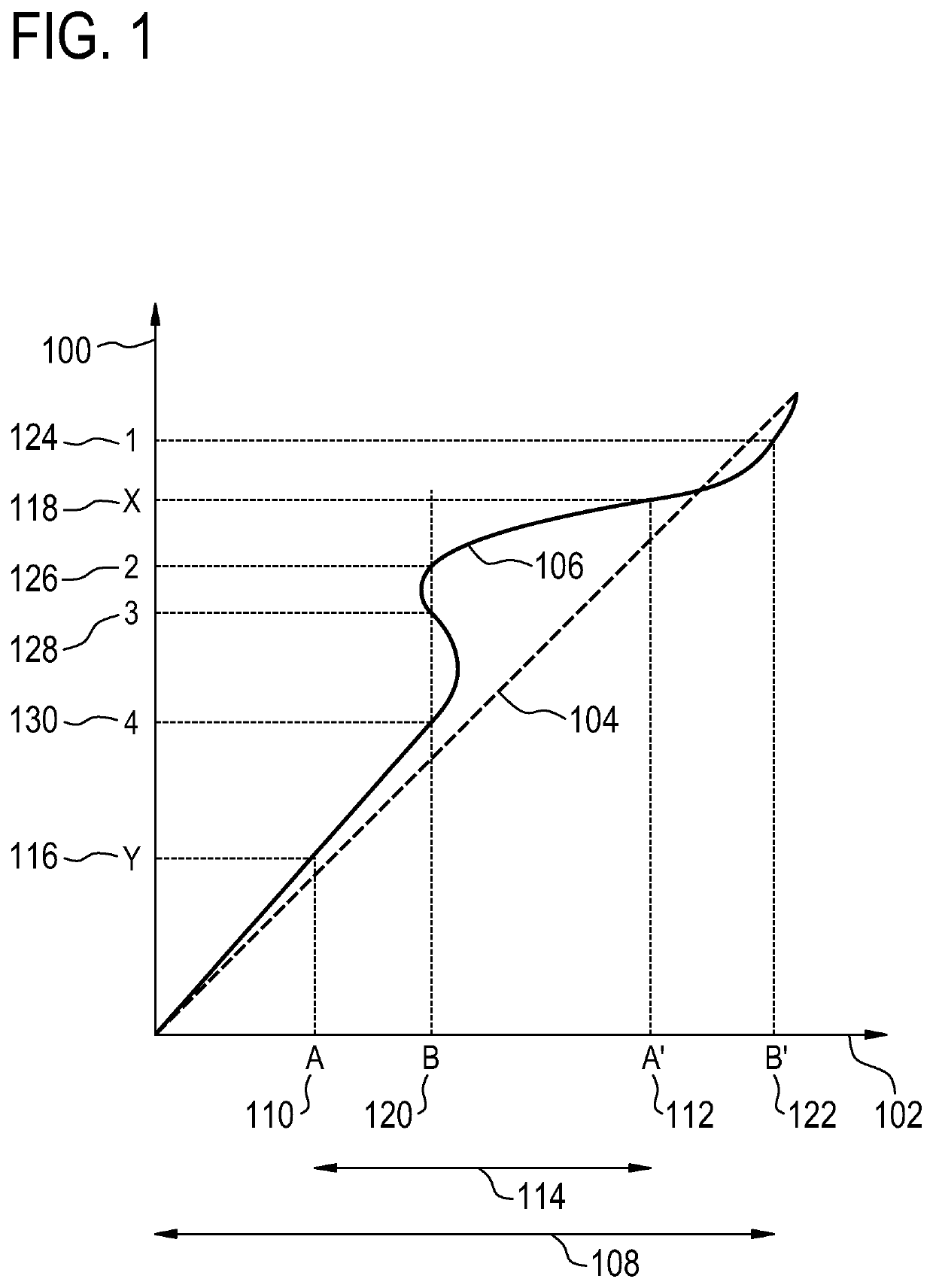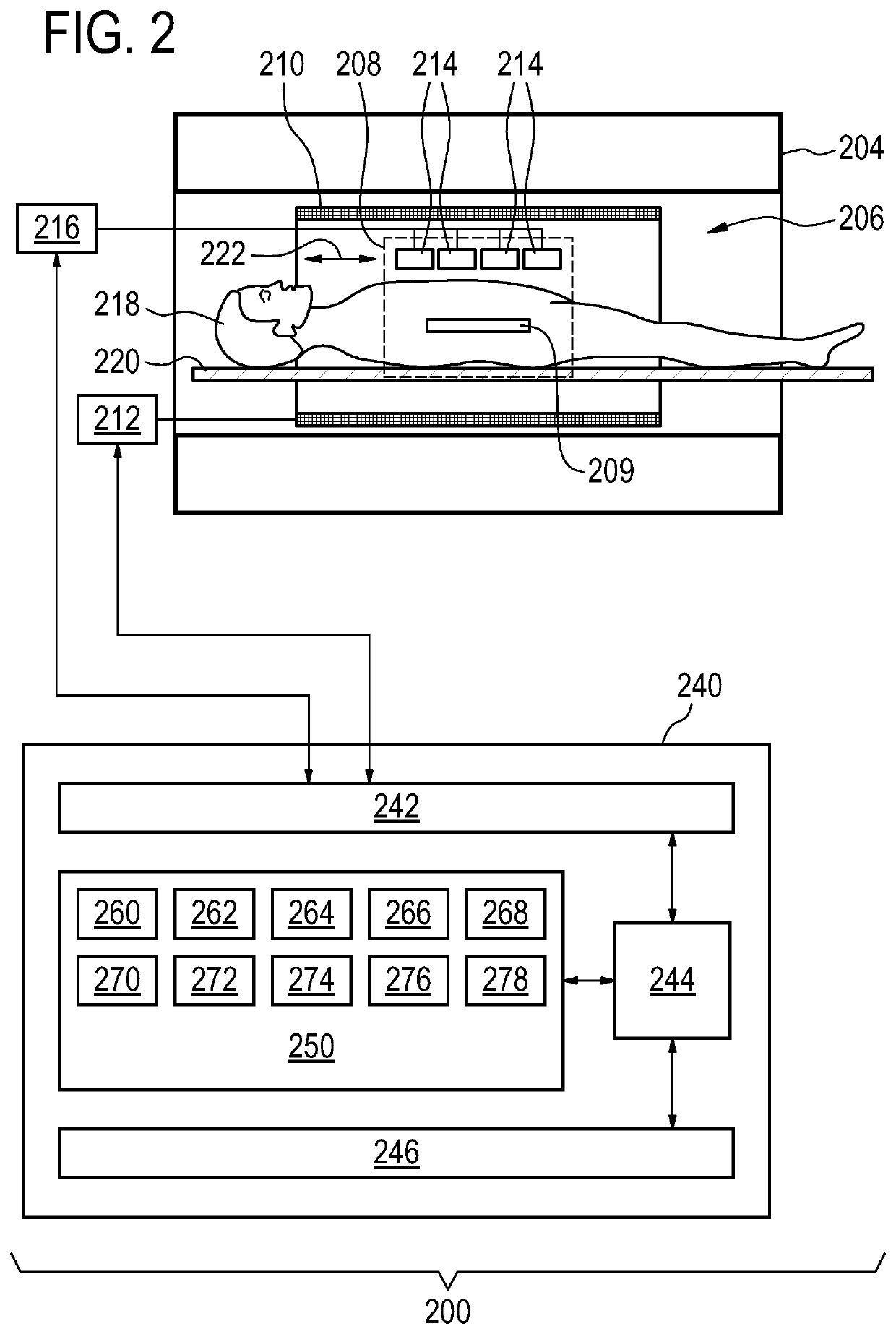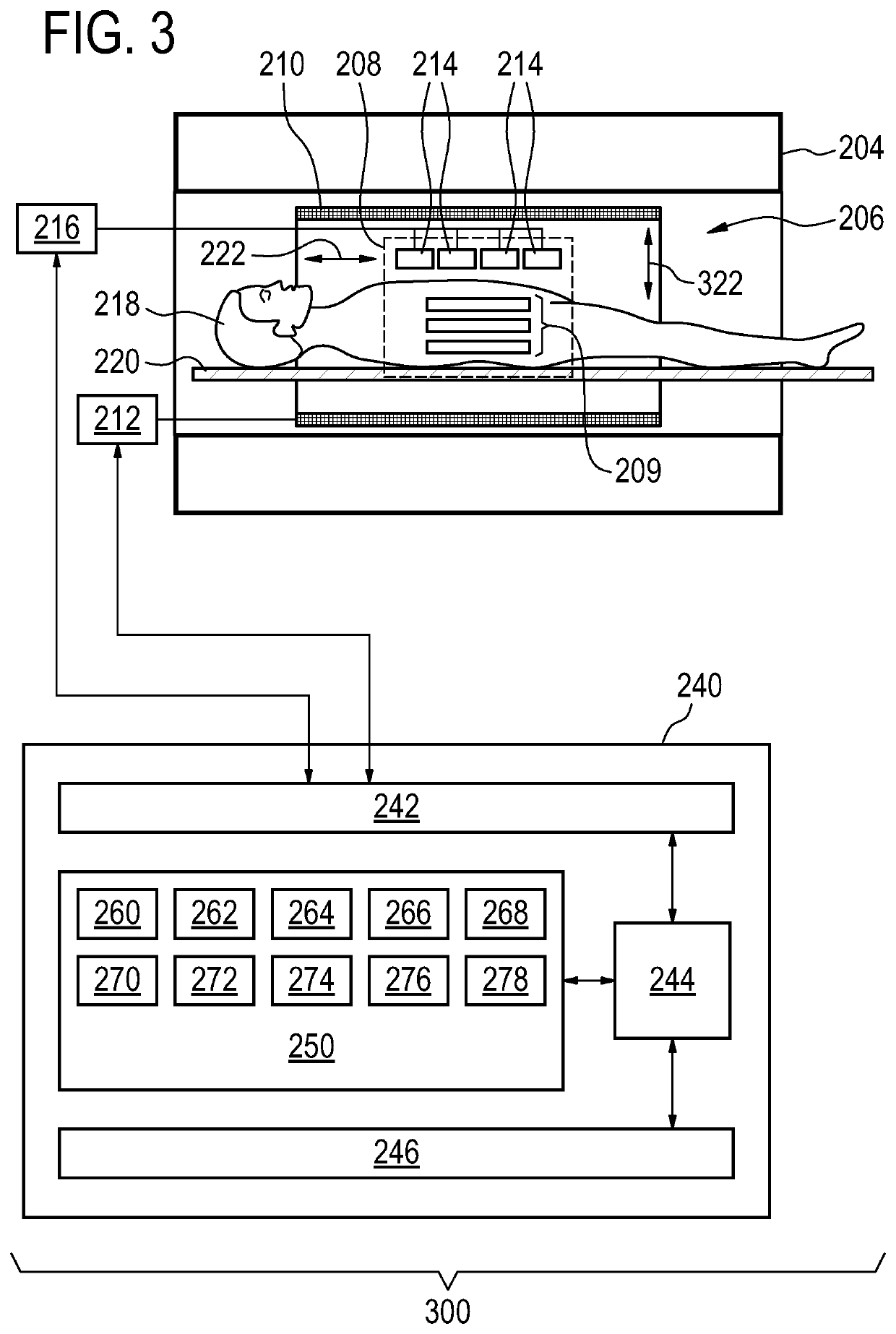BO-corrected sensitivity encoding magnetic resonance imaging
a technology of sensitivity encoding and magnetic resonance imaging, applied in the field of magnetic resonance imaging, can solve problems such as phase error that builds up, image folding, and unfolding process only deals
- Summary
- Abstract
- Description
- Claims
- Application Information
AI Technical Summary
Benefits of technology
Problems solved by technology
Method used
Image
Examples
Embodiment Construction
lass="d_n">[0064]Like numbered elements in these figures are either equivalent elements or perform the same function. Elements which have been discussed previously will not necessarily be discussed in later figures if the function is equivalent.
[0065]In MRI, particularly when using an Echo Planar Imaging (EPI) sequence, significant geometric distortions may occur due to local deviations of the magnetic field. This may be particularly seen close to metal implants or close to cavities, e.g. the ear or nose cavities—or, in general, with all tissue-to-air interfaces. In many cases, the distortion itself is clinically not very relevant nor disturbing.
[0066]However, when using SENSE, there may be indirect consequences of the distortion. At the ‘folding position’ relative to the distorted region (e.g. at a distance of half the field-of-view with SENSE_factor=2), artifacts may appear of the distorted region, even if that folding-position is rather free from distortion. This may for example ...
PUM
 Login to View More
Login to View More Abstract
Description
Claims
Application Information
 Login to View More
Login to View More - R&D
- Intellectual Property
- Life Sciences
- Materials
- Tech Scout
- Unparalleled Data Quality
- Higher Quality Content
- 60% Fewer Hallucinations
Browse by: Latest US Patents, China's latest patents, Technical Efficacy Thesaurus, Application Domain, Technology Topic, Popular Technical Reports.
© 2025 PatSnap. All rights reserved.Legal|Privacy policy|Modern Slavery Act Transparency Statement|Sitemap|About US| Contact US: help@patsnap.com



